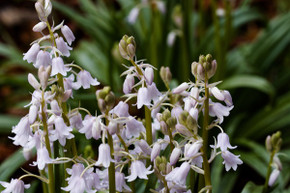

The selection of bluebells we offer is 'Excelsior.' Spanish bluebells that cover ditches in England can also be seen thriving in abandoned sites as well as manicured gardens across the South. Their rich blue color, easy care, and stately form make them a favorite among many. Bulbs will reproduce rapidly and seem to prefer slightly wooded areas. Be sure to let the foliage die down properly and then pass along to friends after bulbs have quickly multiplied. Scott Odgen, in his book, Garden Bulbs for the South, aptly calls the color "wisteria-blue."

Hyacinthoides hispanicus "Spanish Bluebells" have risen to the top as one of my favorite bulbs. The first time I first spotted them was at a 1920's Norman Rockwall style home in North Louisiana. I liked them then, and someone about an hour north of there shared some with me. My deeper love matured when I saw them in mass in England. There is an English bluebell, that is beautiful and natural and a little smaller, but they also have this robust bloomer growing in their gardens for a large April color impact.
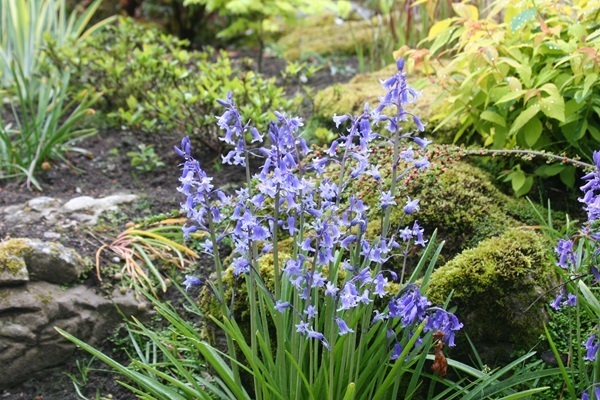
This bulb works as a wonderful accent piece. Their striking pop of color in April really adds to your garden. These are smaller bulbs, and have a tendency to dry out, so be sure to plant them as soon as possible! They are striking when planted in en masse of 60+ bulbs. If you want to try planting them en masse, simply dig a trench about 3-4 inches deep, place the bulbs about 1-2" apart, and cover the entire area with soil. Then water.
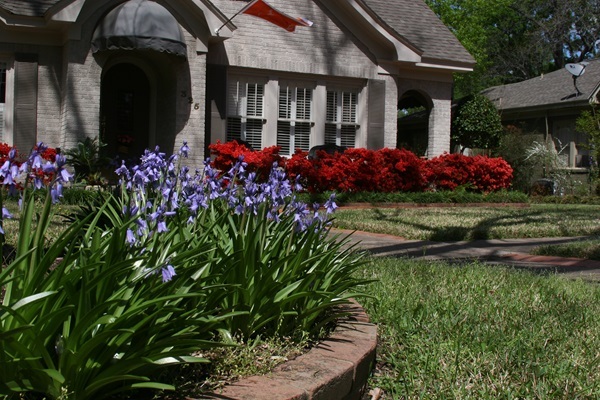
What to expect: This bulb will put on its foliage in February/March to prepare for its April bloom. The flowers will grow to about 12-18" tall. Each shoot will produce a cluster of little bluish/purple bells. The lovely blooms will last for 2-3 weeks depending on the heat. But the green foliage will add to your garden for at least another month. Allow the foliage to die back naturally. When it is completely dead, then you can cut if off. Remember, the foliage is what takes in the sun energy to allow the bulbs to make it through the year and produce beautiful blooms the next year.
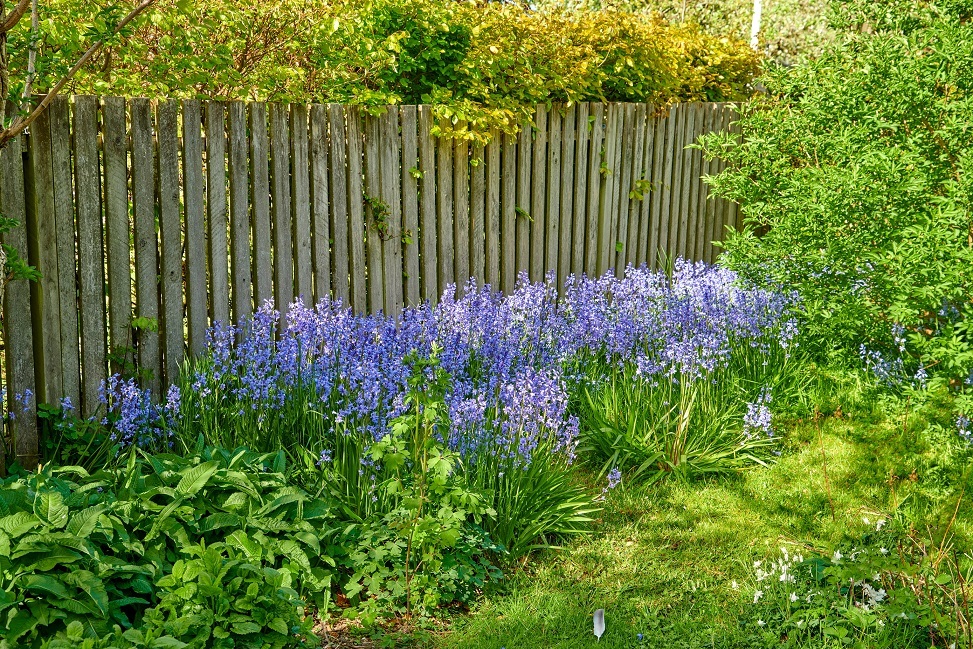
Care and planting: These bulbs do best when planted in zones 6-9 where they will receive at least 6+ hours of winter sun; however, this is one of the few bulbs that has been known to succeed even in woodland areas and under live oaks.
Simply plant them 2-3 times deep the size of the bulb. Plant the bulbs 1-2" apart if you want them to look more natural or up to 6" apart if you are planning to let them fill in the area over the next few years. The size of this bloom allows it to look great in containers, as a border, along walkways, in rock gardens, or in an open area. They like well-drained soil.
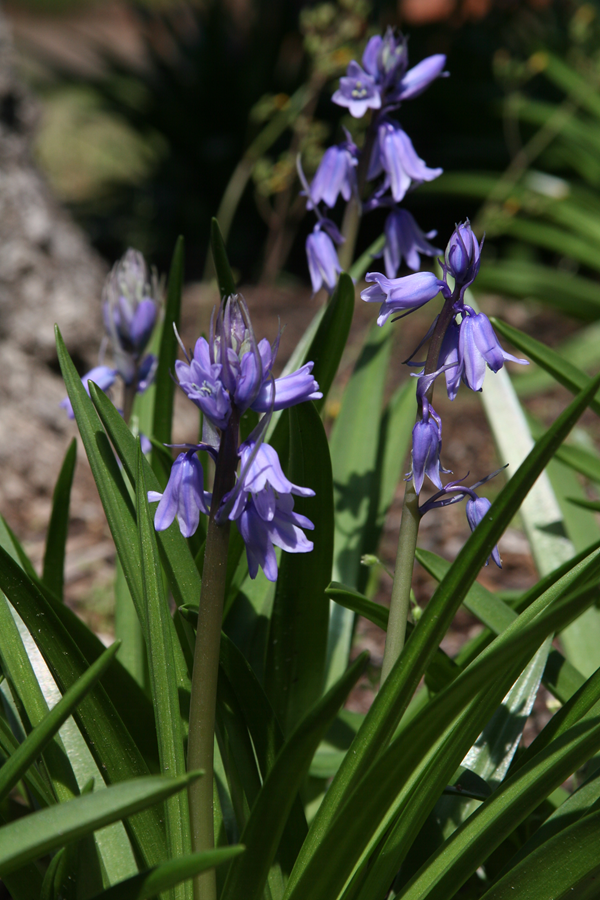
Plant in pots: Can I plant them in pots? Yes! They still need that winter sun though so be sure to place the pot in a very sunny location that will receive 6+ hours of sun. Just water them a little until the foliage and blooms start to appear and then be sure to water them a little more. Place them in a pot with well-drained soil. You can plant a lot of bulbs in a small pot to have a dramatic showing. If the weather is nice between February and May, you can set the pot outside to take in great nutrients directly from the sun. We know april is a little late for a freeze, but be sure to keep the pot out of the temperatures below 34 degrees as the pot gets cold from all sides and can freeze the bulbs. Remember that the bulbs will multiply so after the foliage has died back you may want to go ahead and transplant some of the bulbs into other pots for the next season.
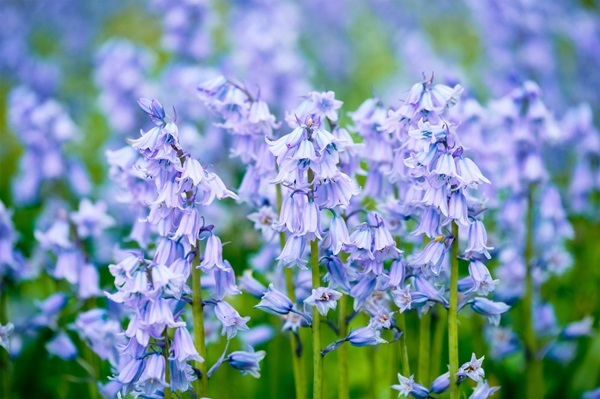
Animals: Bees are very attracted to 'Spanish Bluebells' as there are fewer bulbs in bloom in April. Generally, Spanish bluebells are resistant to deer and rabbits; however, deer have been known to eat plastic flowers if hungry enough. Squirrels don't eat Spanish bluebells, but they might dig in the loose dirt when you plant them.
The selection of bluebells we offer is 'Excelsior.' Spanish bluebells that cover ditches in England can also be seen thriving in abandoned sites as well as manicured gardens across the South. Their rich blue color, easy care, and stately form make them a favorite among many. Bulbs will reproduce rapidly and seem to prefer slightly wooded areas. Be sure to let the foliage die down properly and then pass along to friends after bulbs have quickly multiplied. Scott Odgen, in his book, Garden Bulbs for the South, aptly calls the color "wisteria-blue."

Hyacinthoides hispanicus "Spanish Bluebells" have risen to the top as one of my favorite bulbs. The first time I first spotted them was at a 1920's Norman Rockwall style home in North Louisiana. I liked them then, and someone about an hour north of there shared some with me. My deeper love matured when I saw them in mass in England. There is an English bluebell, that is beautiful and natural and a little smaller, but they also have this robust bloomer growing in their gardens for a large April color impact.

This bulb works as a wonderful accent piece. Their striking pop of color in April really adds to your garden. These are smaller bulbs, and have a tendency to dry out, so be sure to plant them as soon as possible! They are striking when planted in en masse of 60+ bulbs. If you want to try planting them en masse, simply dig a trench about 3-4 inches deep, place the bulbs about 1-2" apart, and cover the entire area with soil. Then water.

What to expect: This bulb will put on its foliage in February/March to prepare for its April bloom. The flowers will grow to about 12-18" tall. Each shoot will produce a cluster of little bluish/purple bells. The lovely blooms will last for 2-3 weeks depending on the heat. But the green foliage will add to your garden for at least another month. Allow the foliage to die back naturally. When it is completely dead, then you can cut if off. Remember, the foliage is what takes in the sun energy to allow the bulbs to make it through the year and produce beautiful blooms the next year.

Care and planting: These bulbs do best when planted in zones 6-9 where they will receive at least 6+ hours of winter sun; however, this is one of the few bulbs that has been known to succeed even in woodland areas and under live oaks.
Simply plant them 2-3 times deep the size of the bulb. Plant the bulbs 1-2" apart if you want them to look more natural or up to 6" apart if you are planning to let them fill in the area over the next few years. The size of this bloom allows it to look great in containers, as a border, along walkways, in rock gardens, or in an open area. They like well-drained soil.

Plant in pots: Can I plant them in pots? Yes! They still need that winter sun though so be sure to place the pot in a very sunny location that will receive 6+ hours of sun. Just water them a little until the foliage and blooms start to appear and then be sure to water them a little more. Place them in a pot with well-drained soil. You can plant a lot of bulbs in a small pot to have a dramatic showing. If the weather is nice between February and May, you can set the pot outside to take in great nutrients directly from the sun. We know april is a little late for a freeze, but be sure to keep the pot out of the temperatures below 34 degrees as the pot gets cold from all sides and can freeze the bulbs. Remember that the bulbs will multiply so after the foliage has died back you may want to go ahead and transplant some of the bulbs into other pots for the next season.

Animals: Bees are very attracted to 'Spanish Bluebells' as there are fewer bulbs in bloom in April. Generally, Spanish bluebells are resistant to deer and rabbits; however, deer have been known to eat plastic flowers if hungry enough. Squirrels don't eat Spanish bluebells, but they might dig in the loose dirt when you plant them.